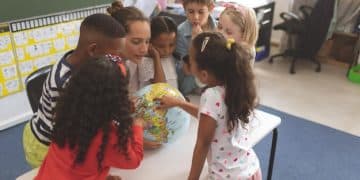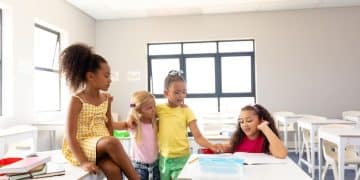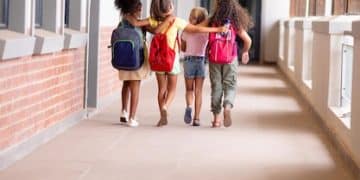New Federal Guidelines for Special Education 2025: What to Expect
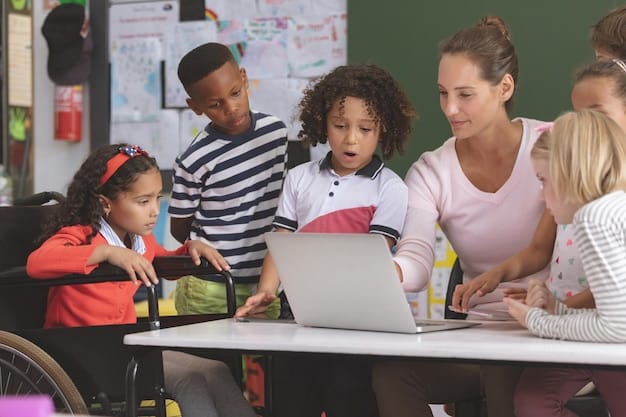
Understanding the new federal guidelines for special education services in 2025 is crucial for educators, parents, and students, as these guidelines aim to enhance inclusivity, ensure equitable access to resources, and promote individualized support for students with disabilities across the United States.
The landscape of special education is ever-evolving, and 2025 promises significant updates in federal guidelines. Staying informed about these changes is vital for ensuring that students with disabilities receive the appropriate support and resources they need to thrive. This article unpacks the new federal guidelines for special education services in 2025, offering clarity and insights for educators, parents, and advocates alike.
Understanding the Individuals with Disabilities Education Act (IDEA)
To grasp the significance of the upcoming changes in 2025, it’s essential to understand the foundation upon which special education services are built. The Individuals with Disabilities Education Act (IDEA) is the cornerstone of special education in the United States, ensuring that children with disabilities have access to a free and appropriate public education (FAPE).
Key Components of IDEA
IDEA is not just one law but a comprehensive framework that outlines the rights and responsibilities of students, parents, and schools. Here are some of its key components:
- Free Appropriate Public Education (FAPE): This guarantees that all children with disabilities, regardless of the severity of their disability, are entitled to a public education tailored to their unique needs.
- Individualized Education Program (IEP): An IEP is a legally binding document created for each student with a disability, outlining their educational goals, services, and accommodations.
- Least Restrictive Environment (LRE): Students with disabilities should be educated alongside their non-disabled peers to the maximum extent appropriate.
- Parental Rights: IDEA provides parents with numerous rights, including the right to participate in IEP meetings, access their child’s educational records, and challenge school decisions.
IDEA has been amended and reauthorized several times since its original enactment in 1975, with each iteration refining and strengthening the protections for students with disabilities. The upcoming changes in 2025 represent the latest step in this ongoing evolution.
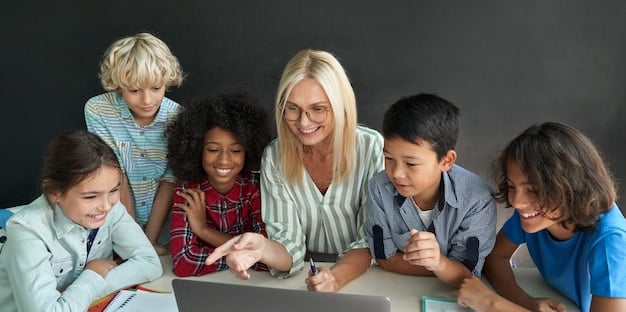
In essence, IDEA serves as the bedrock for special education, continuously evolving to meet the changing needs of students and to promote their success in both academic and life skills. The 2025 guidelines are anticipated to further advance these goals.
Anticipated Changes in Eligibility Criteria
One of the most closely watched areas of change in the 2025 federal guidelines involves the eligibility criteria for special education services. These criteria define who qualifies for support under IDEA, and any modifications can have a significant impact on the number of students receiving services.
There is growing discussion and advocacy for incorporating a more comprehensive approach to evaluating students for special education. This may involve looking beyond traditional academic assessments to consider factors such as social-emotional development, adaptive behavior, and functional skills.
Potential Areas of Revision
While the final details are yet to be released, several potential areas of revision in the eligibility criteria are being discussed:
- Specific Learning Disabilities (SLD): Modifications to how SLD is identified, possibly emphasizing response to intervention (RTI) models to ensure early and effective support.
- Autism Spectrum Disorder (ASD): Refinements in the diagnostic criteria to better reflect the diverse presentations of ASD and to reduce disparities in identification.
- Emotional Disturbance (ED): Clarifications and updates to the definition of ED to address concerns about over- or under-identification, and to better capture the impact of trauma and mental health issues on academic performance.
For instance, the guidelines might emphasize the use of multi-tiered systems of support (MTSS) to provide increasingly intensive interventions to struggling learners before determining eligibility for special education. This approach could help to prevent unnecessary labeling and ensure that students receive appropriate support regardless of whether they meet the formal criteria for a disability.
Changes to eligibility criteria are expected to be data-driven, evidence-based, and focused on ensuring that students receive the support they need as early as possible, tailored to their individual strengths and challenges.
Focus on Inclusive Practices and Least Restrictive Environment
A major thrust of the upcoming federal guidelines is likely to be an even greater emphasis on inclusive practices and the least restrictive environment (LRE). The goal is to ensure that students with disabilities are integrated into general education settings to the maximum extent appropriate, with the supports and accommodations they need to succeed.
Inclusive practices go beyond simply placing students with disabilities in general education classrooms. They involve creating a welcoming and supportive environment where all students are valued, respected, and given the opportunity to participate fully in all aspects of school life.
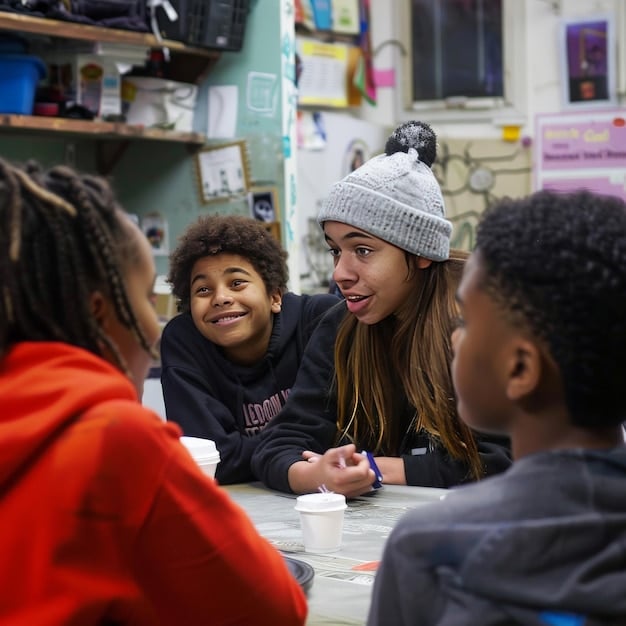
Strategies for Promoting Inclusion
The new guidelines are expected to promote a range of strategies for fostering inclusive environments:
- Co-Teaching: General education and special education teachers working together to plan and deliver instruction in inclusive classrooms.
- Universal Design for Learning (UDL): Designing curriculum and instruction that is accessible to all learners, regardless of their abilities or disabilities.
- Assistive Technology: Providing students with disabilities with the tools and technologies they need to access the curriculum and participate fully in classroom activities.
- Positive Behavioral Interventions and Supports (PBIS): Implementing school-wide systems of support to promote positive behavior and prevent проблем behavior.
For instance, schools might be encouraged to implement UDL principles to create flexible learning environments that meet the diverse needs of all students. This could involve providing students with multiple means of representation, expression, and engagement, allowing them to learn and demonstrate their knowledge in ways that best suit their individual strengths and preferences.
The upcoming federal guidelines emphasize that inclusive practices are not just beneficial for students with disabilities but also for their non-disabled peers, fostering a more inclusive and equitable learning environment for all.
Enhanced Emphasis on Family Engagement and Collaboration
Family engagement and collaboration are vital components of ensuring successful outcomes for students with disabilities. The upcoming federal guidelines are expected to reinforce the importance of meaningful partnerships between schools and families, recognizing that parents are essential members of the IEP team and have valuable insights to contribute.
Effective family engagement goes beyond simply inviting parents to IEP meetings. It involves building trusting relationships, actively soliciting parent input, and providing parents with the information and support they need to advocate effectively for their children.
Ways to Enhance Family Engagement
The new guidelines may promote several strategies for enhancing family engagement and collaboration:
- Improved Communication: Regular and proactive communication between schools and families, using a variety of methods (e.g., phone calls, emails, text messages, home visits).
- Parent Training and Support: Providing parents with training and resources to help them understand their rights and responsibilities, navigate the special education system, and support their children’s learning at home.
- Collaborative Problem-Solving: Working together with parents to identify challenges and develop solutions that meet the unique needs of their children.
- Culturally Responsive Practices: Respecting and valuing the cultural backgrounds and perspectives of all families, and adapting communication and engagement strategies accordingly.
For example, schools might be encouraged to conduct home visits to build relationships with families and gain a better understanding of their cultural values and beliefs. They might also provide parents with training on how to implement evidence-based strategies at home to support their children’s learning and development.
The forthcoming federal guidelines are anticipated to highlight the necessity of culturally responsive practices in family engagement, acknowledging that families from diverse backgrounds may have different communication styles, expectations, and levels of comfort with the special education system.
Increased Focus on Transition Services
Transition services play a crucial role in preparing students with disabilities for life after high school, whether that be pursuing postsecondary education, entering the workforce, or living independently. The upcoming federal guidelines are expected to place even greater emphasis on ensuring that students receive comprehensive and individualized transition planning and support.
Effective transition planning starts early, often as early as middle school, and involves assessing students’ interests, strengths, and needs, as well as setting goals for their future. It also involves providing students with opportunities to develop the skills and knowledge they need to succeed in their chosen post-secondary pathways.
Key Components of Transition Services
The new guidelines are expected to highlight several key components of effective transition services:
- Career Exploration: Providing students with opportunities to explore different career options and learn about the skills and education required for various professions.
- Postsecondary Education Planning: Helping students navigate the college application process, identify appropriate accommodations and supports, and access financial aid.
- Independent Living Skills Training: Teaching students essential life skills, such as budgeting, cooking, and transportation.
- Vocational Training: Providing students with hands-on training in specific job skills, either through school-based programs or community partnerships.
For instance, schools might be encouraged to partner with local businesses to provide students with internships or apprenticeships, giving them real-world work experience and the opportunity to develop valuable job skills. They might also provide students with mentoring from adults with disabilities who have successfully transitioned to postsecondary education or employment.
The prospective federal guidelines also emphasizes the importance of self-advocacy skills, encouraging students to actively participate in their IEP meetings, express their needs and preferences, and learn how to access resources and support.
Utilizing Technology to Enhance Special Education Services
Technology is increasingly playing a transformative role in special education, offering new and innovative ways to support students with disabilities. The upcoming federal guidelines are expected to encourage the use of technology to enhance instruction, assessment, and communication.
Assistive technology (AT) can help students overcome barriers to learning and participate more fully in classroom activities. AT can range from low-tech solutions, such as pencil grips and highlighters, to high-tech devices, such as speech-to-text software and screen readers.
Examples of Technology in Special Education
The upcoming guidelines may promote the use of technology in various aspects of special education:
- Personalized Learning Platforms: Using technology to deliver individualized instruction and track student progress
- Virtual Reality (VR): Employing VR simulations to provide students with immersive learning experiences and build social skills.
- Teletherapy: Utilizing video conferencing to provide students with remote access to therapists and specialists.
- Data Analytics: Leveraging data to identify trends, evaluate the effectiveness of interventions, and make data-driven decisions.
For example, schools might use personalized learning platforms to provide students with individualized instruction tailored to their specific learning needs and preferences. They might also use VR simulations to help students practice social skills in a safe and controlled environment.
Additionally, the evolving federal guidelines will likely emphasize the importance of ensuring that all students with disabilities have equitable access to technology, regardless of their socioeconomic status or geographic location.
| Key Aspect | Brief Description |
|---|---|
| 🔑 Eligibility Criteria | Potential revisions for SLD, ASD, and ED to ensure accurate identification. |
| 🤝 Inclusive Practices | Emphasis on integrating students with disabilities into general education settings. |
| 👨👩👧👦 Family Engagement | Reinforcing partnerships between schools and families for student success. |
| 🚀 Transition Services | Comprehensive planning for post-high school life, including education and employment. |
Frequently Asked Questions (FAQ)
What are the key changes expected in the 2025 federal guidelines for special education?
▼
The key changes expected in the 2025 federal guidelines include potential revisions to eligibility criteria for specific learning disabilities (SLD), autism spectrum disorder (ASD), and emotional disturbance (ED), as well as a greater emphasis on inclusive practices and least restrictive environment (LRE).
What is the Individuals with Disabilities Education Act (IDEA)?
▼
IDEA is a United States federal law that ensures students with disabilities have access to a free and appropriate public education (FAPE). It mandates individualized education programs (IEPs) and parental rights, aiming for inclusive education.
How will the new guidelines impact family engagement in special education?
▼
The new guidelines are expected to reinforce the importance of meaningful partnerships between schools and families, promoting improved communication, parent training and support, collaborative problem-solving, and culturally responsive practices.
What role does technology play in the future of special education services?
▼
Technology, including assistive technology (AT), personalized learning platforms, virtual reality (VR), teletherapy, and data analytics, is expected to play a transformative role, enhancing instruction, assessment, and communication for students with disabilities.

